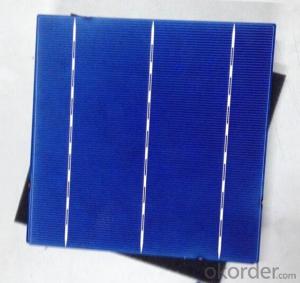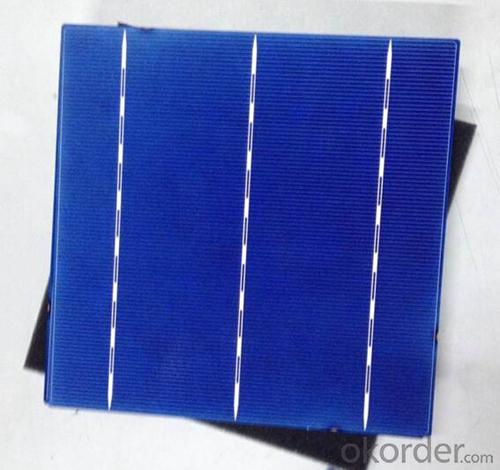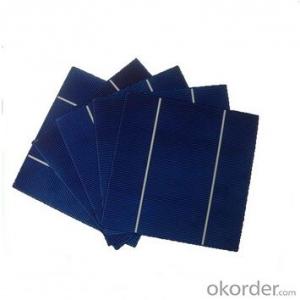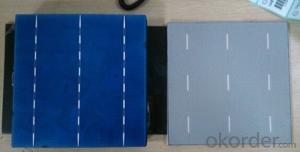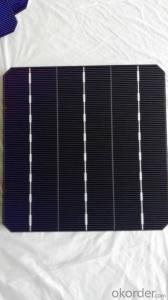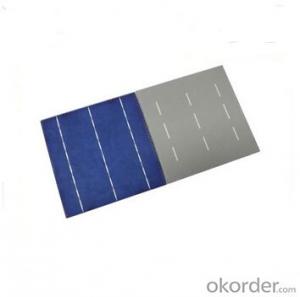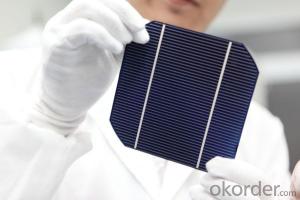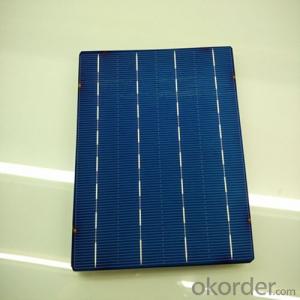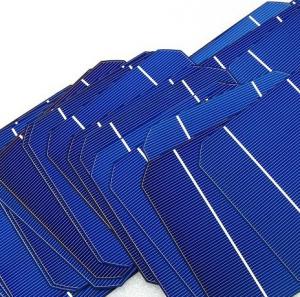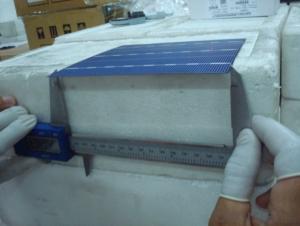Thin Film Solar Cells for Sale - Polycrystalline Silicon Solar Cells 156mm
- Loading Port:
- Shanghai
- Payment Terms:
- TT or LC
- Min Order Qty:
- 5000 pc
- Supply Capability:
- 9000000 pc/month
OKorder Service Pledge
OKorder Financial Service
You Might Also Like
Instruction of Polycrystalline Silicon Solar Cells156mm:
Solar cells is made by solar wafer, it has three categories of solar cell right now, monocrystalline polycrystalline and thin film,
These cells are entirely based around the concept of ap-n junction, which is the critical part of solar module, it is the part that can convert the light energy into electricity, the thickness is from 180um to 200um, with even busbars to conduct electricity, textured cell can decrease diffuse reflection; they are often electrically connected and encapsulated as a module.
Photovoltaic modules often have a sheet of glass on the front (sun up) side, allowing light to pass while protecting semiconductor wafers from abrasion and impact due to wind-driven debris, rain, hail, etc.
Solar cells are also usually connected in series in modules, creating an additive voltage.
Connecting cells in parallel will yield a higher current;With high quality and stable quality.
Our Cells can greatly improve the performance of Solar Modules.
Polycrystalline Silicon Solar Cells 156mm Advantage:
• High efficiency and stable performance in photovoltaic conversion.
• Advanced diffusion technique ensuring the homogeneity of energy conversion efficiency of the cell.
• Advanced PECVD film forming, providing a dark blue silicon nitride anti-reflection film of homogenous color and attractive appearance.
• High quality metal paste for back surface and electrode, ensuring good conductivity, high pulling strength and ease of soldering.
• High precision patterning using screen printing, ensuring accurate busbar location for ease with automatic soldering a laser cutting.
Polycrystalline Silicon Solar Cells Images:

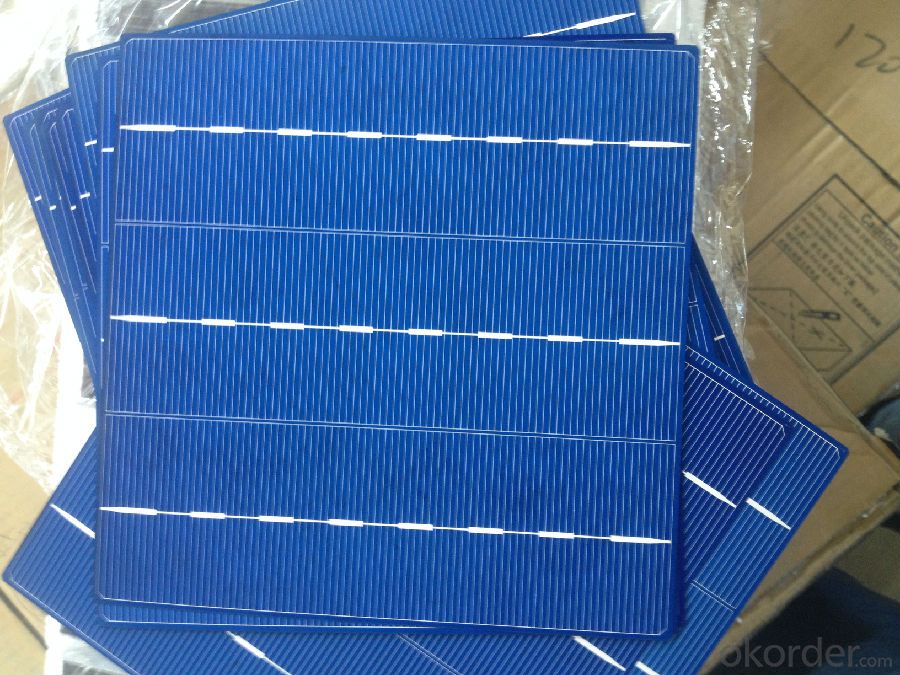
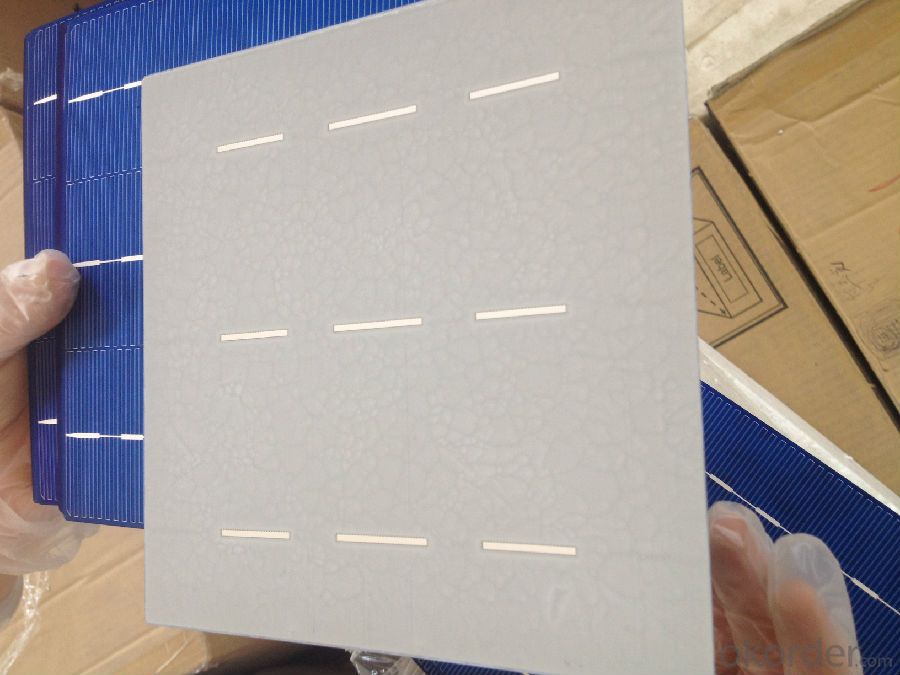
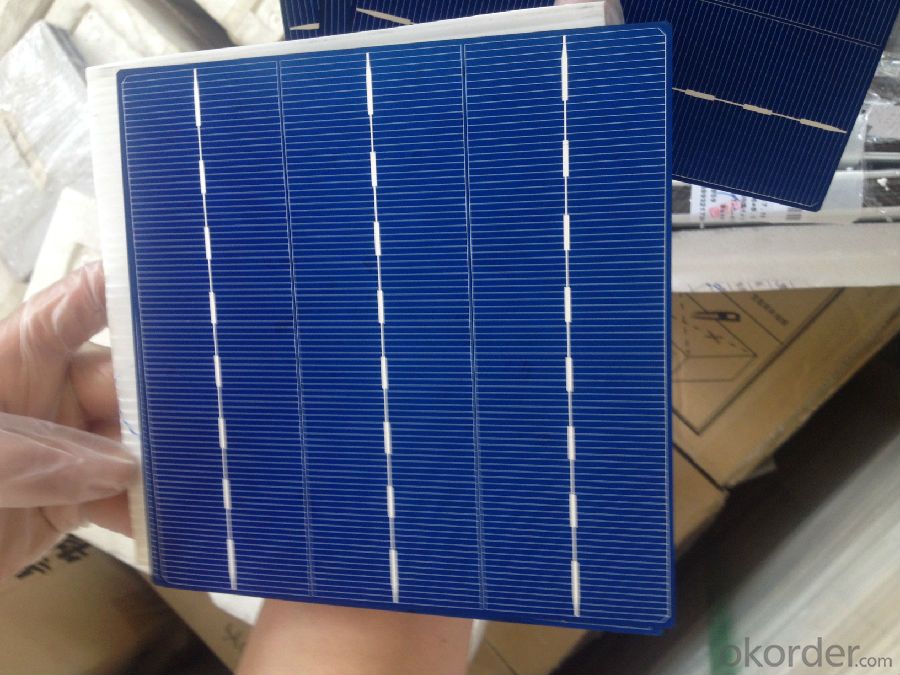
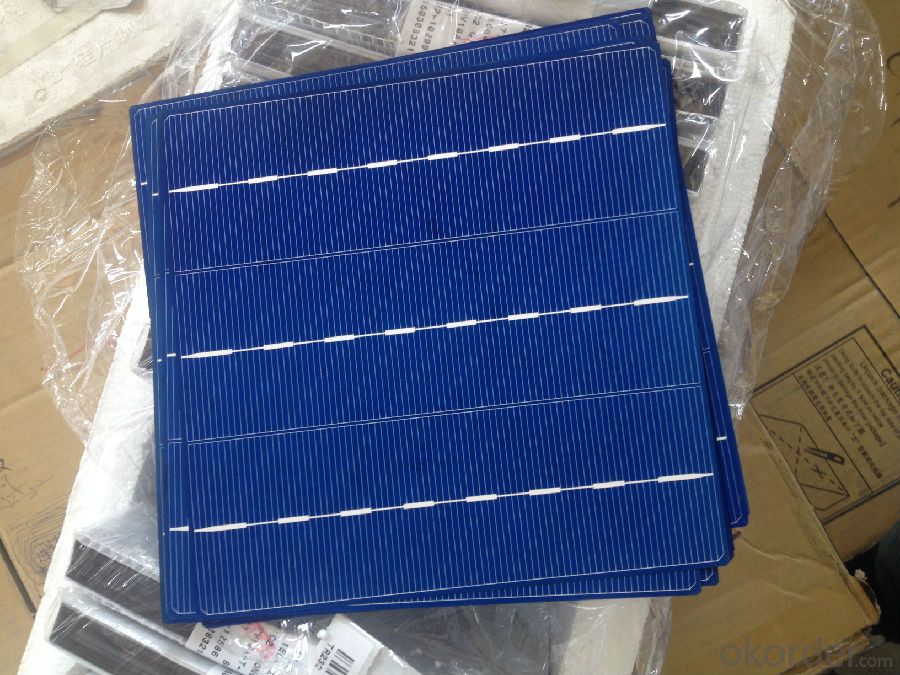
Specification of Polycrystalline Silicon Solar Cells:
Mechanical data and design |
Format - 156 mm × 156 mm ± 0.5 mm |
Thickness- - 200 μm ± 20 μm |
Front (-) - 1.4 mm bus bars (silver),blue anti-reflection coating (silicon nitride) |
Back (+) - 2 mm wide soldering pads (silver) back surface field (aluminium) |
Temperature Coefficient of Cells |
Voc. Temp .coef.%/K -0.364%/K |
Isc . Temp .coef.%/K +0.077%/K |
Pm. Temp. coef.%/K -0.368%/K |
Electrical Characteristic |
Efficiency (%) Pmpp (W) Umpp (V) Impp (A) Voc (V) Isc (A) |
18.00% 4.380 0.538 8.141 0.634 8.740 |
17.90% 4.356 0.538 8.097 0.634 8.725 |
17.80% 4.331 0.537 8.065 0.633 8.710 |
17.70% 4.307 0.536 8.035 0.632 8.695 |
17.60% 4.283 0.535 8.006 0.631 8.680 |
17.50% 4.258 0.534 7.974 0.630 8.665 |
17.40% 4.234 0.533 7.944 0.629 8.650 |
17.30% 4.210 0.532 7.914 0.628 8.635 |
17.20% 4.185 0.531 7.88 -- 0.627 -- 8.620 |
17.10% 4.161 0.530 7.851 0.626 8.605 |
17.00% 4.137 0.529 7.820 0.625 8.590 |
Intensity Dependence |
Intensity [W/m2] Isc× [mA] Voc× [mV] Pmpp |
1000 1.00 1.000 1.00 |
900 0.90 1.000 0.90 |
800 0.80 0.99 0.80 |
500 0.50 0.96 0.49 |
300 0.30 0.93 0.29 |
200 0.20 0.92 0.19 |
IV Curve

FAQ of Polycrystalline Silicon Solar Cells
We have organized several common questions for our clients,may help you sincerely:
①What price for each watt?
It depends on the efficiency of the solar cell, quantity, delivery date and payment terms.
②How long can we receive the product after purchase?
In the purchase of product within three working days, We will arrange the factory delivery as soon as possible. The pecific time of receiving is related to the state and position of customers.Commonly 7 to 10 working days can be served.
③Can you provide the peripheral products of the solar panels, such as the battery, controller, and inverter? If so, can you tell me how do they match each other?
Yes, we can, we have two companies for solar region, one is CNBM International, the other is CNBM engineering Co.
We can provide you not only the solar module but also the off grid solar system, we can also provide you service with on grid plant.
④What is your warranty of solar cell?
Our product can promise lower than 0.3% open box crack, we support claim after opening the box if it has crackm color difference or sth, the buyer should give pictures immediately, we can not accept the claim after the solar cell has assembled to solar panel.
• Timeliness of delivery
• ⑤How do you pack your products?
We have rich experience on how to pack the solar cell to make sure the safety on shipment, we could use wooden box or pallet as buyer's preference.
⑥ Can you do OEM for us?
Yes, we can.
- Q: Can solar cells be used for indoor lighting?
- Yes, solar cells can be used for indoor lighting. However, since solar cells require sunlight to generate electricity, they need to be connected to batteries or other energy storage systems to store the energy for use during nighttime or when there is limited sunlight. Additionally, the efficiency of indoor lighting using solar cells may be lower compared to traditional electrical grid-powered lighting systems.
- Q: How are solar cells connected in a solar panel?
- Solar cells are connected in a solar panel through a series of electrical connections, typically using metal conductors, to form an array. These connections allow for the flow of electric current generated by individual solar cells, which are usually made of silicon-based semiconductors, to be combined and harnessed as usable electricity.
- Q: Can solar cells be used to power irrigation systems?
- Yes, solar cells can be used to power irrigation systems. Solar cells convert sunlight into electricity, which can be stored in batteries and used to power irrigation systems. This provides a sustainable and renewable energy source for agriculture and reduces dependency on traditional power grids.
- Q: Can solar cells be used for powering remote weather monitoring stations?
- Yes, solar cells can be used to power remote weather monitoring stations. Solar cells are a reliable and sustainable source of energy that can convert sunlight into electricity. They can be installed in remote areas where access to the power grid is limited or non-existent, providing a consistent power supply to operate weather monitoring equipment. Additionally, solar cells require minimal maintenance and have a long lifespan, making them a practical choice for powering remote weather monitoring stations.
- Q: What are the environmental impacts of solar cell production?
- The environmental impacts of solar cell production include the extraction and processing of raw materials, such as silicon, which can contribute to habitat destruction and water pollution. The manufacturing process itself requires energy and generates greenhouse gas emissions. Additionally, the disposal of old or damaged solar cells can pose challenges due to their composition and potential for toxic waste. However, when compared to the environmental impacts of fossil fuel-based energy production, solar cell production is generally considered to be much less harmful.
- Q: What is the role of solar cells in powering electric fences?
- Solar cells play a crucial role in powering electric fences as they convert sunlight into electrical energy, which is then used to charge the batteries that supply power to the fence. This renewable energy source ensures a consistent and sustainable power supply, eliminating the need for traditional power sources or frequent battery replacements.
- Q: What is the effect of dust or dirt on solar cell performance?
- The presence of dust or dirt on solar cells can significantly reduce their performance by blocking sunlight from reaching the cells, thereby reducing their efficiency in converting sunlight into electricity. The dust or dirt particles act as a barrier, preventing the photons from reaching the semiconductor material within the solar cells. This decreases the amount of electricity generated, resulting in a decrease in overall power output. Therefore, regular cleaning and maintenance of solar panels is essential to maximize their performance and ensure optimal energy production.
- Q: What is the impact of bird collisions on solar cell performance?
- Bird collisions can have a negative impact on solar cell performance. When birds collide with solar panels, it can cause physical damage to the panels, leading to reduced efficiency and power output. Additionally, bird droppings and debris from collisions can accumulate on the surface of the panels, further hindering their performance. Implementing preventive measures, such as bird deterrents or mesh covers, can help mitigate the impact of bird collisions on solar cell performance.
- Q: Can solar cells be used for powering drones?
- Yes, solar cells can be used for powering drones. By converting sunlight into electricity, solar cells can provide a renewable source of power to drones, reducing the need for traditional batteries and increasing flight duration. Additionally, solar-powered drones have the potential to operate for extended periods without the need for frequent recharging, making them more sustainable and cost-effective in various applications.
- Q: Can solar cells be used for water heating?
- Yes, solar cells can be used for water heating. Solar water heating systems use solar panels, which contain solar cells, to capture energy from the sun and convert it into heat. This heat is then used to warm water for various applications, such as domestic hot water or space heating.
Send your message to us
Thin Film Solar Cells for Sale - Polycrystalline Silicon Solar Cells 156mm
- Loading Port:
- Shanghai
- Payment Terms:
- TT or LC
- Min Order Qty:
- 5000 pc
- Supply Capability:
- 9000000 pc/month
OKorder Service Pledge
OKorder Financial Service
Similar products
Hot products
Hot Searches
Related keywords
